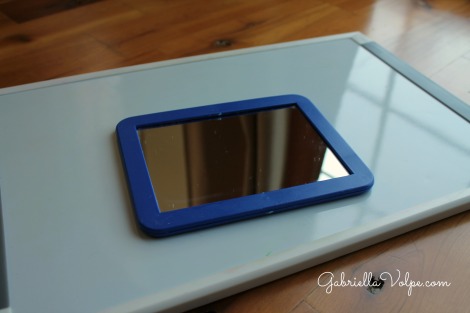This is a post out of the31 Days of Morning Circles. You can find the main page for this series here.
Note: If you’re reading this series for the first time, I suggest you look at the daily structure post to understand the routine we follow in our morning circle.
Talking about feelings can sometimes be tricky for a neurodivergent or disabled child. Luckily, our facial expressions reflect our emotions quite distinctively. Working on feelings also helps a child become better aware of their body signals before they have a meltdown.
In the morning circle, feelings can be experimented with by using a mirror. Since you are already sitting close to the child, your facial expressions can be better interpreted.
Don’t explore too many emotions at once. Begin with one and work on that one for a few days before moving on to the next one. Once you have two emotions, you can play comparison games like “Show me happy” or “Show me sad” while pointing to images on flashcards, and eventually, in magazines.
Feelings activity in the morning circle

TheseKey Education Emotions Learning Cards are published by Carson Dellosa. I like this particular set because they display children’s faces (which other children relate to best), they are sturdy, and they are large. I suggest laminating them for extended use. The set also includes activity ideas for each emotion.
Using emotions flashcards, talk about how the child is feeling today. Ask, “Are you scared?” then reply, “Noooooo” (or “Yes!” if they are). Hold up the card showing scared. Continue this way until the child either lets you know how they’re feeling or, you decide based on their expressions (if they cannot do so for themselves yet). Say, “Your mouth is curled up. You must be happy!” Then, show the happy card. Hold up the mirror to have them see their happy face!

The child can view their face in the mirror, but also yours if you sit behind or beside them and angle the mirror accordingly. Trick: If you can see the child at a specific angle, they can see you.
The best feelings song you can use is “If You’re Happy and You Know It” (changing happy to sad, mad, scared, shy, surprised, silly, excited, sorry, etc.)
How can you incorporate feelings/emotions in the morning circle?

0 Comments